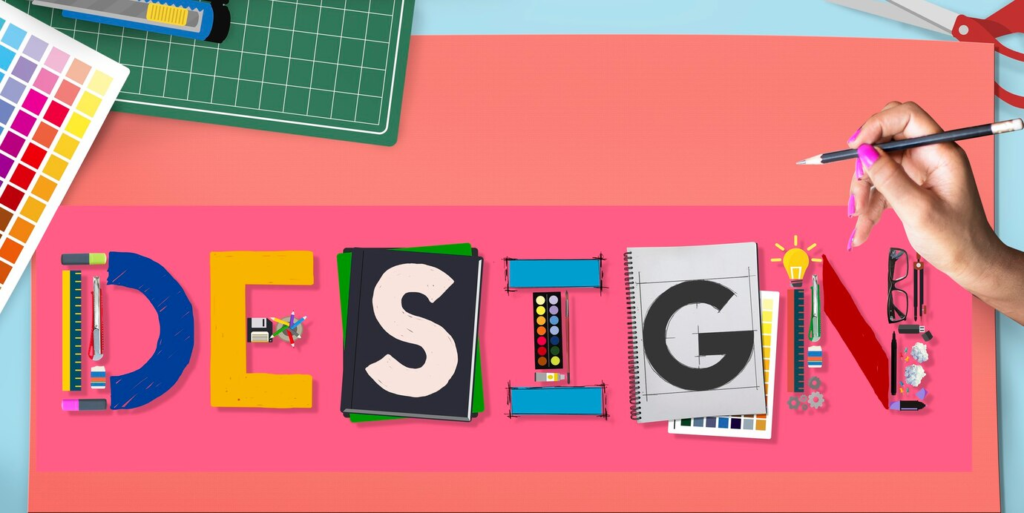Whether you’re a fresh design graduate or a seasoned visual storyteller, your graphic design portfolio is your golden ticket. It’s not just a showcase—it’s a statement of who you are as a creative professional. In an ultra-competitive industry, having a stellar portfolio can be the difference between getting noticed and getting ghosted.
So, how do you build a portfolio that stops the scroll, impresses clients, and gets you hired? Here are 10 expert-approved tips to make your graphic design portfolio truly unforgettable.
1. 🎯 Know Your Audience (And Design for Them)
Before you even start selecting projects, ask yourself: Who do I want to impress?
Are you targeting agencies? Freelance clients? A niche like branding or UX/UI? Knowing your audience helps you curate and present work that aligns with their expectations.
Pro Tip: Tailor different versions of your portfolio for different opportunities. A hiring manager at a fashion brand will want something very different from a startup founder looking for a mobile app designer.

2. 🖼️ Quality Over Quantity
Many designers think they need to include everything they’ve ever created. Big mistake.
A bloated portfolio can overwhelm viewers and dilute your strongest work. Choose 6–10 of your best, most relevant projects, and tell a compelling story with each.
Pro Tip: It’s better to show 6 amazing pieces than 20 okay ones. Make every project earn its spot.

3. ✨ Lead with a Showstopper
You only get one first impression—make it count. Your opening project should be your most impressive or unique piece of work.
If you can make someone say “WOW” in the first 10 seconds, they’ll be hooked.
Pro Tip: Hook them with bold visuals right up front—motion graphics, interactive UI, or a striking brand redesign work great here.

4. 📖 Tell the Story Behind the Design
Design isn’t just about pretty pictures. Clients want to know your thinking.
For each project, include:
- The problem/challenge
- Your role in the project
- The design process and tools used
- The outcome or impact (bonus if you have data!)
This shows you’re not just a visual artist—you’re a problem solver.
Pro Tip: Use a clean layout with short paragraphs and visuals. Treat it like a mini case study.

5. 🧩 Show Range, But Stay Cohesive
Your portfolio should reflect your versatility without feeling chaotic.
For example, you might include:
- Branding/identity
- Web or mobile UI design
- Print design
- Illustration or motion graphics
But tie everything together with a consistent style, tone, or layout format so the portfolio feels like a unified whole.
Pro Tip: Use consistent fonts, colors, and grid structures across your portfolio site to create cohesion.

6. 🌐 Build a Personal Portfolio Website
In the age of Behance and Dribbble, having your own website is a huge flex. It shows initiative and gives you full control over the design and user experience.
Use platforms like:
- Webflow (for full customization)
- Squarespace or Wix (for easier drag-and-drop)
- WordPress (for blogging and SEO)
Pro Tip: Register your own domain name (e.g., yourname.design)—it looks far more professional than yourname123.wixsite.com.

7. 📱 Make It Mobile-Friendly
Designers often overlook this, but more than 50% of traffic comes from mobile devices.
A beautiful portfolio on desktop that’s clunky on mobile = missed opportunity. Test your site on different screen sizes, and optimize loading speed, navigation, and responsiveness.
Pro Tip: Keep tap targets large enough and text readable on small screens. Google also rewards mobile-friendly sites in SEO rankings.

8. 🧍♂️ Don’t Forget You—Add Personality
Clients don’t just hire portfolios—they hire people.
Add a well-written About Me section with:
- A short bio
- Your creative journey
- Your design philosophy
- A friendly photo
Make it human. Let your vibe shine through. It’s okay to be quirky if that’s your style!
Pro Tip: Add a short video intro if you’re comfortable on camera. It builds trust and makes you more memorable.

9. 📬 Make It Easy to Contact You
Don’t make someone hunt for your email or wonder how to reach out. Your contact info should be visible and accessible on every page.
Include:
- Email (not just a contact form)
- LinkedIn or relevant socials
- Optional: calendar booking link (e.g., Calendly) for scheduling calls
Pro Tip: Create a custom “Hire Me” or “Work With Me” page with testimonials, your process, and pricing structure (if applicable).

10. 🔁 Keep It Updated (Always!)
Your portfolio should be a living document. Set a calendar reminder every 3–6 months to refresh it with new projects or update older ones.
An outdated portfolio can send the wrong message (“I haven’t done anything cool lately…”).
Pro Tip: Document your work process as you go. Take screenshots, record Loom videos, and gather feedback—future you will thank you!

Bonus: Tools to Make Portfolio-Building Easier
Here are a few tools to help elevate your portfolio game:
Behance
Purpose: Exposure to design community
Adobe Express
Purpose: Quick graphics and case study mockups
Notion
Purpose: Organizing content before publishing
Figma
Purpose: UI/UX design & prototyping
Loom
Purpose: Recording project walkthrough videos
Your Portfolio Is Your Brand
Think of your graphic design portfolio as your digital handshake. It speaks before you do. A great portfolio shows not just what you can create—but how you think, solve problems, and communicate ideas visually. Don’t just aim to fill up a few pages with projects. Craft a narrative, showcase your edge, and inspire confidence in whoever’s viewing it.
With these 10 tips, you’re not just building a portfolio. You’re building a magnet for opportunities.




